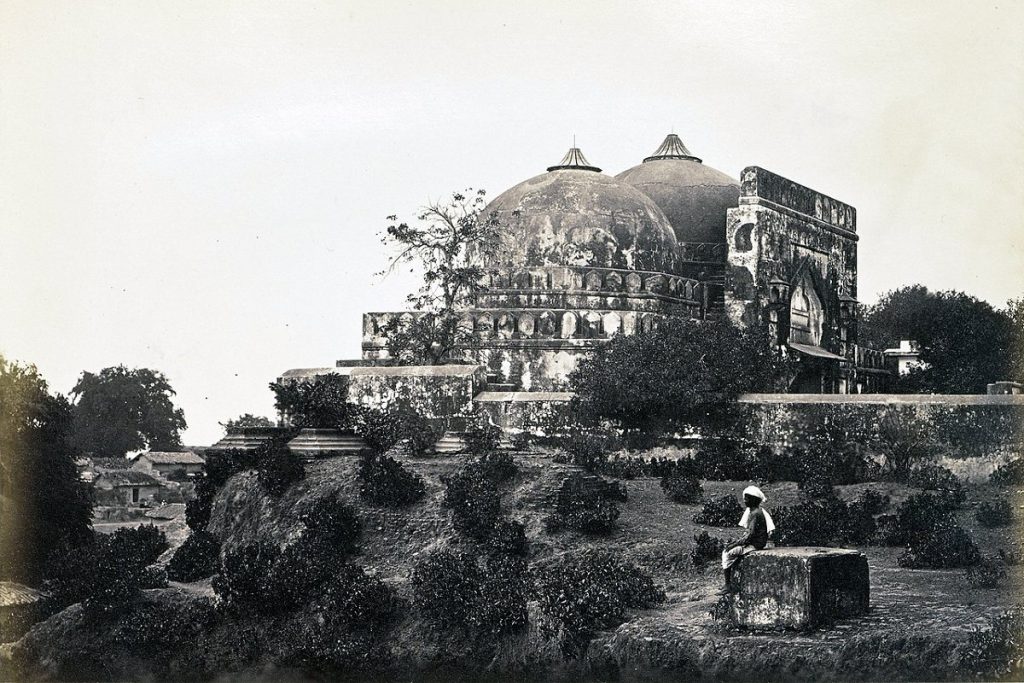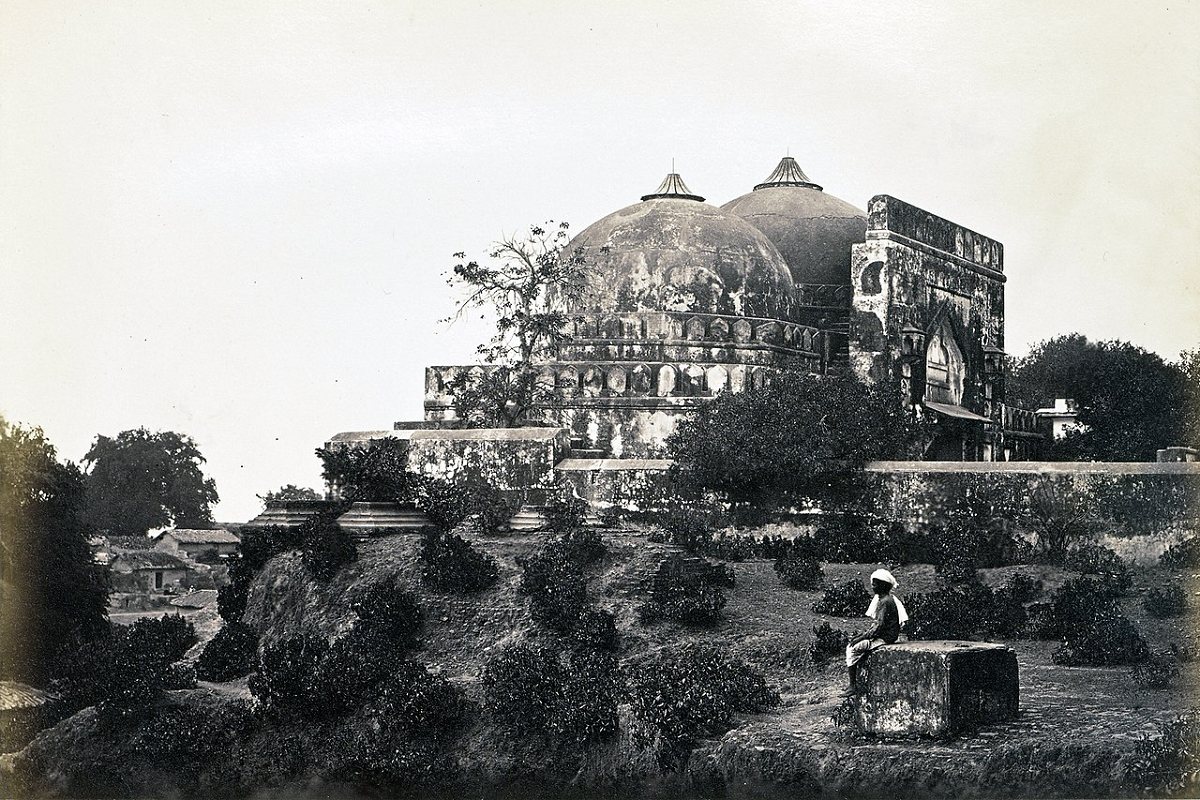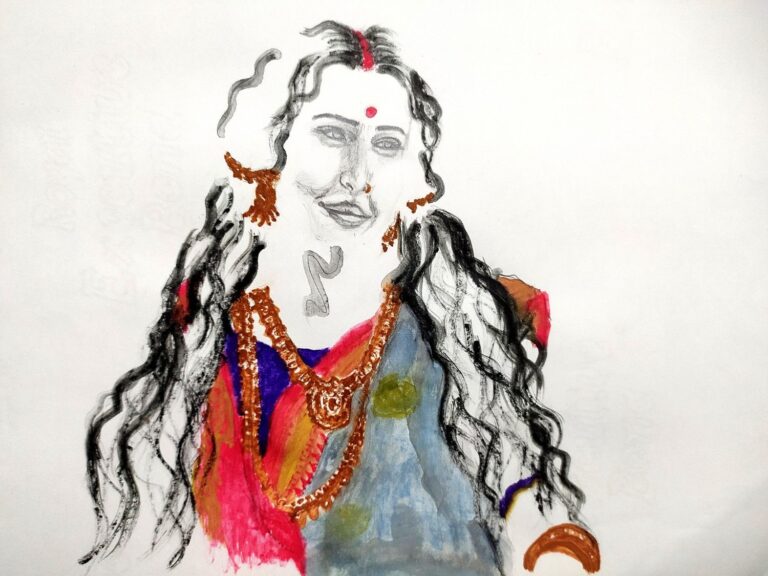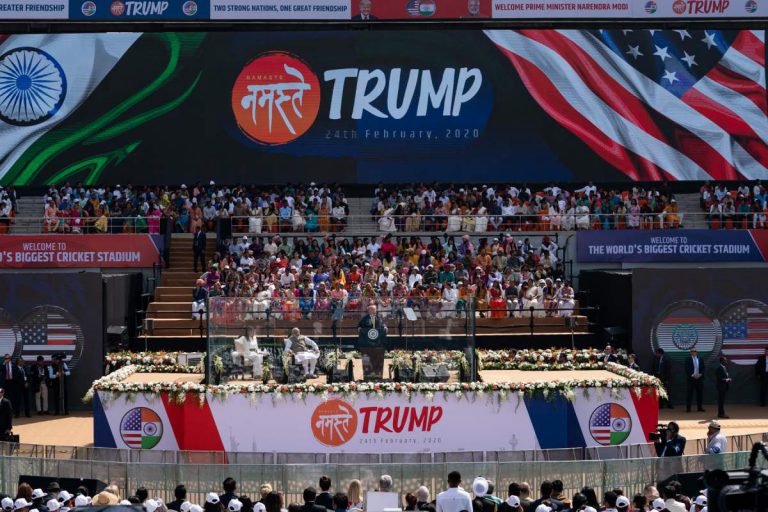The Enemy System: On Violence and Communalism
Dilip Simeon is a trustee of the AMAN Public Charitable Trust. He formerly taught history at Ramjas College, University of Delhi, and has been active in democratic and anti-communal mobilization for many years.

(Published in The Hindustan Times, New Delhi, December 6, 2002, tenth anniversary of Babri Mosque demolition)
He (Pontius Pilate) took water and washed his hands before the crowd, saying ‘I am innocent of the blood of this man, see to it yourselves. And all the people answered, ‘ His blood be on us and on our children’!”
Bible, Mathew’s Gospel
“No law in the world punishes a son for the crime committed by his father. How can we justify the killing of a 5-year old in Ahmedabad for a crime committed in Godhra?” – upper-caste shopkeeper in Ahmedabad.
The shopkeeper was wrong. For centuries, the Catholic Church (and its Protestant offshoots) did indeed justify the punishment of Jews for their mythical role in the murder of Jesus Christ. The myth originated in the Biblical accounts of the life of Jesus, and was perpetuated by Christianity’s greatest intellects, including Paul, Aquinas, Martin Luther and Calvin, not to mention the Papacy. The story was that the Jews took upon themselves and all their children the onus of this crime. For centuries Jews were condemned as the devil’s offspring, sensual, money-worshipers who deserved to be enslaved, their property confiscated, their synagogues burnt, and their homes destroyed. They were to live separately, forbidden from owning land, from marrying Christians. They were held responsible for the Black Death in the 14th century, they were the special targets of the Spanish Inquisition. This tradition attained its apogee in the Nazi genocide of six million European Jews between 1941 and 1945. Significantly, in a conversation with senior Church functionaries in 1933, Hitler is reported to have assured them that “he will take no steps against the Jews that the Church has not taken in 1500 years”. In the end, it was only a matter of degree, of elevating murder into an industry, that marked the difference between Nazism and the hoary traditions of Christian anti-Semitism. The thundering silence of Pope Pius XII in the 1940’s, despite evidence of mass murder and repeated appeals by ordinary Catholics, Allied governments and Jewish organisations was a logical outcome of this theologically ordained ‘enemy system’. It is equally significant that after the Russian Revolution, a section of the Church began to see a link between Judaism and Communism – Hitler’s favorite theme. The man who acquired the informal title of being ‘Hitler’s Pope’, is currently in process of being made a saint. Meanwhile, the burden of Christianity’s sins against the Jews has conveniently been transferred to the shoulders of Palestinians.
The cruel doctrine that guilt passes from one generation to the next has an ancient lineage but is alive and well in modern India. It is the fulcrum of the worldview of our communalists. All Muslim citizens of independent India are supposedly responsible for the actions (real and imaginary) of Muslim rulers in the 16th century. They are also deemed to bear the guilt of Partition. The same logic was applied to justify the carnage of Sikhs in the aftermath of Mrs. Gandhi’s assassination, and in Bangladesh in 1993, where the Hindu population was blamed for the destruction of the Babri Masjid. Connected to the doctrine of collective guilt is the encouragement given to extra-legal punitive action. Mobs led by groups of well-organized hooligans ‘punish’ ordinary people whose guilt was established prior to their being born. Revenge and retaliation have been made instruments of state policy, hence, our ultra-nationalist Lok Sabha could pay silent homage to the victims of 9/11, but cannot pass a condolence resolution for victims of communal violence in India.
How could this happen? Article 21 of the Constitution grants every Indian the right to life and liberty unless deprived of them by the process of law. After the gruesome events in Godhra in February, state officials in Gujarat withdrew these protections from a section of Indian citizens. The entire Muslim community was held responsible for the actions of a few. The killing of innocents was justified on the grounds of collective guilt. Meanwhile, the VHP attacked the legislative assembly in Bhubhaneshwar on March 16, confident in its links with the Union Government. Contemporary events have shown that a section of India’s ruling establishment is tolerant of mob violence, as long as it is directed at ordinary citizens and channeled along religious lines. Indeed, it mobilizes and prepares such violence, while it criticizes Naxalite violence for being mindless and anti-national. Senior retired bureaucrats and policemen have supported this endeavor, along with industrialists, wealthy NRIs, and some religious leaders. The violence of the Bajrang Dal and VHP is ‘nationalism’, that of anyone outside the ‘familial’ ambit of the RSS is lawlessness and terror. This hypocrisy has been transformed into the common sense of our elite, for whom terrorism is a language spoken exclusively by Muslims.
All this is not a matter of the whims of demented persons. It is part of a systematic project to undermine constitutional democracy, which, for all its flaws, remains a major institutional resource for the working people’s struggle for a better life. The “enemy system”, as described by John Mack, Harvard psychiatrist, is an instrument by which political leaders sustain popular hostility towards imagined adversaries as a means of maintaining power. It thrives on lies, intolerance, and ignorance, the demonization of other peoples, and the surrender of personal responsibility to ‘great men’. In extreme form, it appeals to the most destructive and exclusivist aspects of the human mind. And it glorifies brutality as a ‘selfless’ form of violence.
The destruction of the Babri Masjid was a foundation stone of the new political order being constructed by a section of India’s ruling establishment. We are witness to an ongoing ‘constitutional’ coup d’etat. By acts of deliberate deception, (such as the arguments in favor of the VHP by the Attorney General and the acceptance of a ‘sacred’ brick in Ayodhya by an official), the government supported the fraudulent claim of the VHP to represent all Hindus. By so doing, the swayamsevaks in high office undermined the status of Parliament, which has been elected by millions of citizens, including a large proportion of Hindus. A parallel system of representation is being forced upon the Indian public.
What is the purpose of such a project? Nearly thirty crore Indians belong to families working in the informal sector of the economy. Savarna-capitalism uses a hierarchical caste structure, the constant threat of corporal punishment, and oppressive customs to keep wages abysmally low, neglect social security systems, and undermine the social-democratic potential of modern state institutions. What we have in place of a duly regulated work-process, is an institutionalised Social Darwinism. Ultimately, it is the political authority that regulates markets and wage relations and stabilizes economic systems. Hence governance must be examined for patterns of regularity. Why is there a gap between official regulations (regarding working conditions, and minimum wages), and their implementation? Why is the status of citizen effectively denied to millions of workers? Why does the zone of informality drain away the rights that arise from the zone of formality? Why do the reigning authorities periodically suspend the right of citizens to remain alive, by instigating mass murder in the guise of communal or caste ‘riots’, for whose duration the police apparatus is suspended and the judicial conscience-stricken by amnesia? Is it not true that their main victims are the laboring poor and self-employed artisans?
Communal and caste violence has become the preferred mode of governance of the Indian ruling classes, the mode by which they have negotiated their discomforts with democracy. The periodic outbreaks of mass murder that we call ‘riots’ can no longer be explained away as unfortunate tangents in an otherwise steady course of India’s development. They are the very face of Indian modernity. Unless we abolish the enemy system, we will transfer its burden to our children. And that will be a crime which will not wash easily.
Featured Image Credits: Wikimedia Commons







